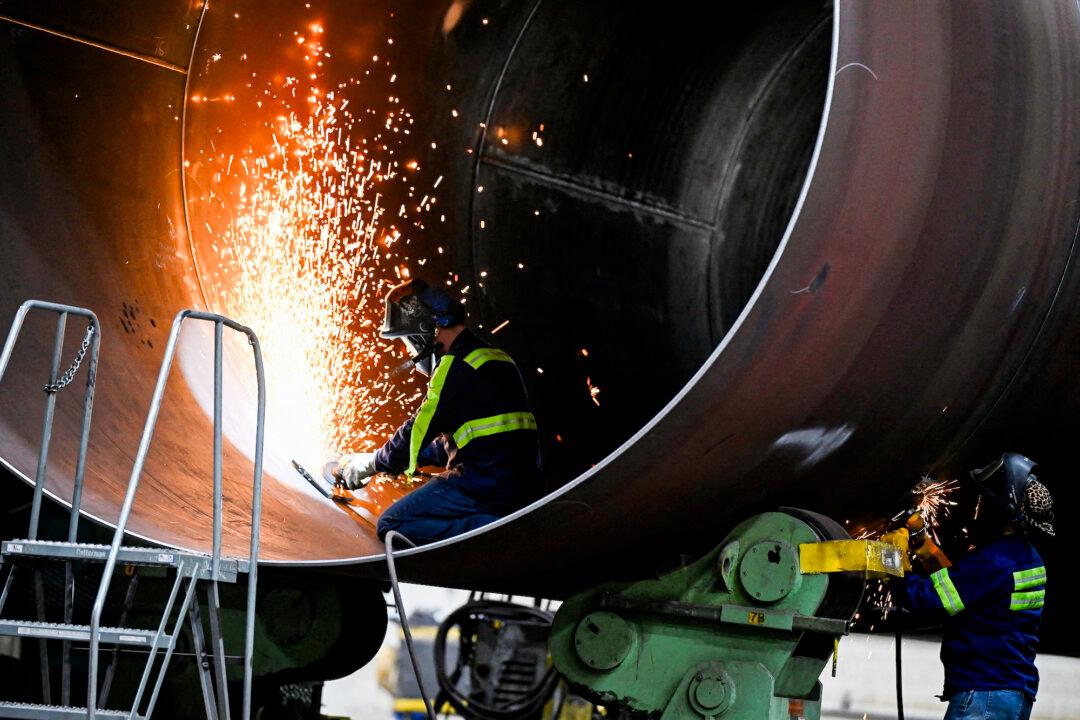Factory orders unexpectedly fell in August, stoking concerns about the deepening downturn in the U.S. manufacturing sector.
The U.S. Census Bureau reported on Oct. 3 that factory orders fell by 0.2 percent in August, following a 4.9 percent increase in July. The decline marked a steeper drop than was generally anticipated, with economists polled by Reuters expecting orders to remain flat.
Orders for consumer goods, often a bellwether for household spending, fell by 0.5 percent in August, led by a 0.8 percent decline in nondurable goods such as food products and petroleum. This reflects weaker demand for essential goods, suggesting pressure on consumer budgets.
Non-defense capital goods excluding aircraft—commonly referred to as core capital goods—posted a modest 0.3 percent increase. The modest rise in orders for these goods, a key proxy for future business investment, hints at the corporate sector’s ongoing hesitation to commit to large-scale projects amid broader economic uncertainty. Shipments of core capital goods—important for GDP calculations—dipped by 0.1 percent, pointing to a pullback in business equipment spending.
The decline in core capital goods shipments aligns with broader trends in the U.S. manufacturing sector, which has been entrenched in recessionary conditions for much of the past year. These national trends mirror what’s being seen regionally, with Federal Reserve factory indexes from Kansas, Texas, and Virginia all pointing to contractions or stagnation.
The S&P Global Purchasing Managers’ Index painted a similar picture of industrial pullback, as its manufacturing index fell to 47.3 from 47.9, indicating an accelerating downturn.
“Factories reported the largest monthly drop in production for 15 months in response to a slump in new orders, in turn driving further reductions in employment and input buying as producers scaled back operating capacity,” Chris Williamson, chief business economist at S&P Global Market Intelligence, said in a statement.
The deepening contraction in manufacturing is weighing on employment.
Recent S&P Global data showed the steepest decline in factory staffing in 14 years, outside of pandemic-related disruptions. The trend was confirmed by ISM figures, with its employment index falling to 43.9 in September, a two-point drop from August. These numbers suggest manufacturers are increasingly reducing headcount in response to weaker demand. Further, the latest government jobs report, released on Oct. 4, showed that the manufacturing sector shed 7,000 jobs in September, bringing the two-month loss to 34,000.
“Consumers’ assessments of current business conditions turned negative while views of the current labor market situation softened further,” Dana Peterson, chief economist at The Conference Board, said in a statement. “Consumers were also more pessimistic about future labor market conditions and less positive about future business conditions and future income.”
Plans for big-ticket purchases such as appliances, smartphones, and laptops, fell, according to The Conference Board report, aligning with the Census Bureau’s report that showed softening in new orders.







